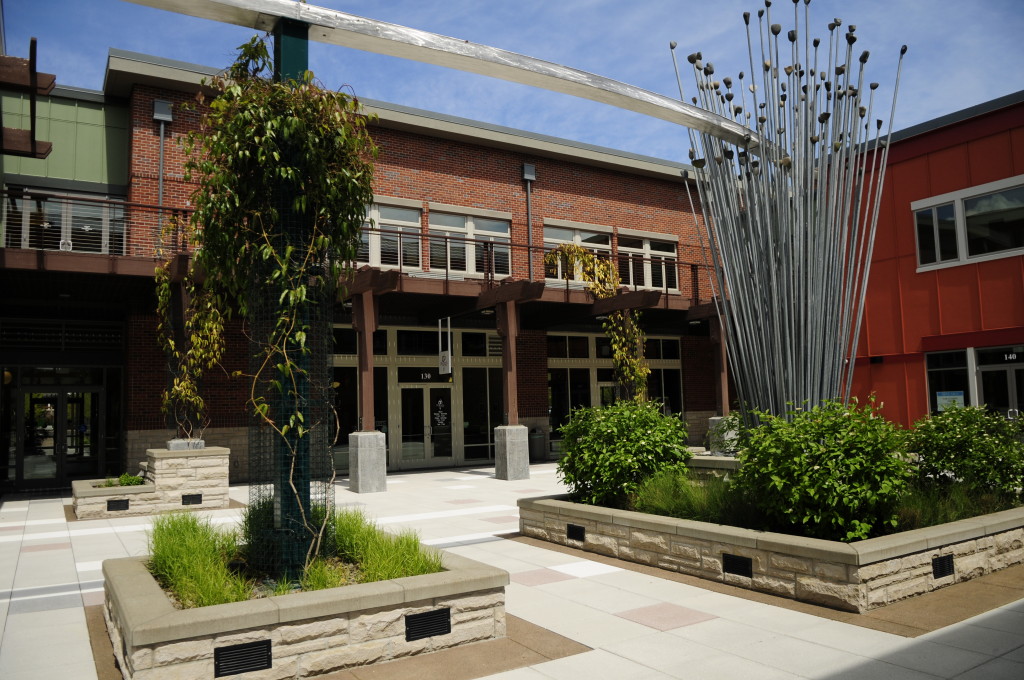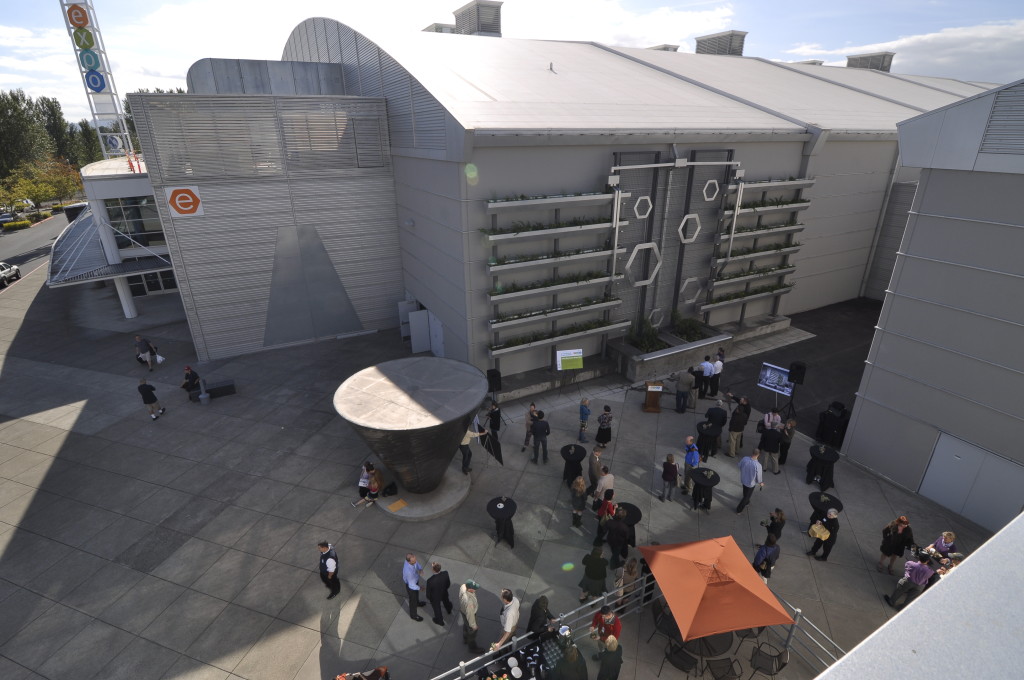Sustainability in educational facilities has been building movement in schools across the Pacific Northwest over the past decade. Several design firms including GreenWorks have been working toward integrating sustainability in schools not only to set an example of high environmental standards but to serve as a teaching tool for students to learn the value of sustainable thinking. A recent DJC article highlights this trend with several schools in Oregon and Washington, including Da Vinci Arts Middle School, for which GreenWorks designed the site work for a modular 21st century classroom that serves as a study model for the school district. GreenWorks continues to work with Science teacher Jason Hieggeokein creating a tree sink project on site. The project will demonstrate the carbon sinking effects of trees in an artistic and inviting way. Inviting the students to explore nature further.
“Unless you can see it and touch it, you don’t understand how it works,” Weekes said. “Seventy percent of students are visual. Having these systems exposed shows there is more to a building than the rooms they happen to occupy. Then you can apply those lessons to math, science and physics in their curriculum.”

Science teacher Jason Hieggeoke uses Da Vinci Arts Middle School’s stormwater treatment garden as a learning tool for his science classes. (Photo by Dan Carter/DJC)
That is what science teacher Jason Hieggeoke has been doing at Da Vinci Arts Middle School. He has used a water garden, which drains storm water, as a living laboratory.
“There aren’t many special places for kids in schools, and this is one of them,” Hieggeoke said. “We do water quality testing and look for invertebrates. We care for the garden so they learn about conservation. Sometimes they will see the pipes and ask where they are coming from, which gives me the opportunity to explain the storm-water system to them.”
See the full article on the DJC website at: http://djcoregon.com/news/2010/03/30/green-schools-designed-to-catch-students-eyes/
GreenWorks has worked with a number of teachers and classrooms across Oregon to help incorporate learning landscapes into their schools. Projects include stormwater, gardens, native restoration, outdoor classrooms and natural play areas. If your school is heading in this direction and looking for a little design guidance we would love to hear from you.












